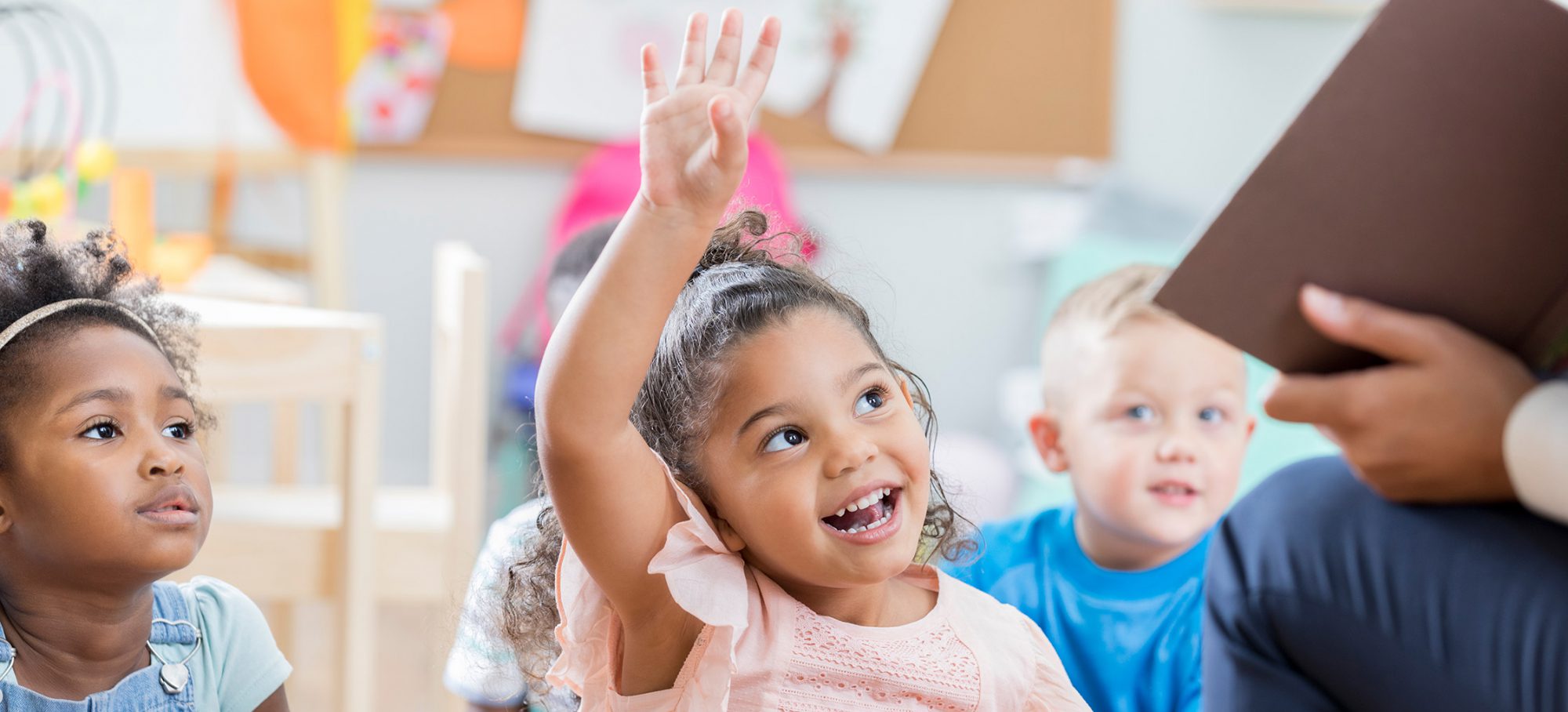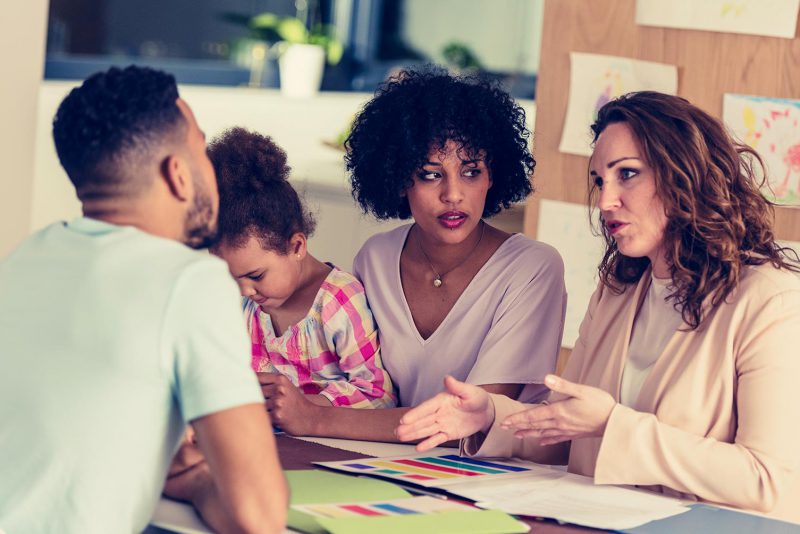You’ve probably heard the saying that goes a little something like “The home is a child’s first school and the parent is the child’s first teacher.” Even little everyday moments with your child can turn into essential learning for them, especially during their pivotal developmental years.
Though your child will inevitably transition into pre-k, a parent never transitions out of the teacher role. But the good news is you do gain a teammate in this journey— your child’s preschool teacher! Together, you will help your child grow and learn about the world around them, making effective parent-teacher communication vital.
In this article, we will discuss:
- Why positive parent-teacher communication is important
- Types of communication
- How to foster beneficial parent-teacher interactions
- Effective communication strategies
Let’s jump in!
Why is parent-teacher communication important?
Once a child starts school, they will spend nearly as much time with their teacher as they do their parents. Because you and your preschooler’s teacher are the most prominent adult figures in their lives, it makes sense that the way you interact with each other matters.
Research has shown that a positive connection between parent and teacher helps to improve grades, social skills, attitude towards school and learning, work habits, and behavior. Not only does this partnership benefit the child, but it also benefits the parent and teacher. Johns Hopkins University evaluated this partnership and discovered significant results.
For one, parents reported trusting teachers and acknowledging their impact more when they have there is strong communication. Secondly, parent-teacher communication builds better teacher morale. Teachers reported that it makes them feel happier and more proficient as an educator when solid communication is established. Both of these are key factors in creating a healthy environment where children are empowered to learn.
Types of Communication
Communication comes in many forms, shapes, and sizes. Here’s a little about the types of communication you can expect to see from your preschooler’s classroom.
One-Way Communication
One-way communication is:
- Linear
- Strictly informative or persuasive
- Requires no response
A one-way interaction in the pre-k classroom setting goes from the teacher to parent. In this form of communication, the teacher is the authority and the parent is simply a listener. Common examples of this are newsletters and announcements that are sent home with your child.
This type of communication certainly has a time and a place. Still, to foster a good parent-teacher relationship, two-way communication is crucial.
Two-Way Communication
Two-way communication, on the other hand, is interactive and focused on feedback. Parents and teachers in this communication style are equals, working together for the success of the child.
Examples of two-way communication are:
- Parent-teacher conferences
- Committee meetings
- Open, collaborative discussion via email or phone
Though both ways of communication are valid, two-way communication is the most impactful in building a genuine parent-teacher partnership.
Tips for Fostering Good Parent-Teacher Communication
Follow the Three C’s
The Early Learning Network introduced three main components that foster a good parent-teacher partnership: communication, consistency, and collaboration.
Communication
It is important to establish communication and connection early on with your child’s pre-k teacher. Ways to do this are:
- Make it clear from the beginning that you want to take an active role in your preschooler’s learning.
- Discuss the best form of contact whether it be by phone, email, notes, or in-person meetings.
- Always be transparent and timely with responses. Two-way communication is key.
- Attend meetings to talk about your child’s strengths, struggles, progress, likes, dislikes, and goals.
Consistency
Establishing a consistent routine to enhance your preschooler’s education at home demonstrates that you and their teacher are in this together. To do so:
- Ask their teacher how you can encourage and enforce continued learning at home.
- Create a homework and learning routine. Having a consistent time and quiet place for this will make an impact.
- Encourage healthy habits in everything from reading to eating to being active.
- Make sure that you and the teacher are on the same page when it comes to your child’s growth and learning. This lets them know that you are all in it together.
Collaboration
Each of the Three C’s builds upon each other, so having consistent communication will make this step a lot easier. To promote collaboration:
- Share the goals and expectations you each have for your preschooler during this school session.
- Openly discuss how you can both help your child reach those and what modifications may need to be made based on their individual strengths and weaknesses.
- Address concerns and solve problems together.
Ask the Right Questions
Though there isn’t a special formula for the perfect parent-teacher interaction, there are important topics that should be discussed. These include classroom learning activities, your child’s accomplishments, and how to continue the learning at home.
Classroom Learning Activities
A parent should stay informed on what their child is doing and learning in their pre-k classroom. This allows them to assess the quality of their pre-k curriculum and find ways to support in-class learning.
Child Accomplishments
It is easy to get discouraged when the only interaction a parent has with a teacher is about a child’s misbehavior or shortcomings. When such bad news outweighs good news, it can make it seem like parents aren’t effectively helping their children, even if that’s not the case. While it is important to address issues that may arise, it’s equally as important to celebrate victories together. Remember, this is a team effort.
Continued Learning
Though your title is parent, you are still a teacher to your child. Again, you and your child’s preschool instructor are a team. Parents and teachers should discuss how they can take what their child is learning in the classroom and implement it into the home. In doing so, they can continue to practice and perfect the skills they’re developing.
Strategies for Effective Parent-Teacher Communication
In-Person Meetings
Meeting with your preschooler’s teacher goes beyond the occasional parent-teacher conference. Opportunities to volunteer at school events, open houses, and after-school functions are all ways to engage in face-to-face communication. If none of these are feasible for your family, ask about home visits.
Technology
We live in a digital age, which has created seemingly endless opportunities for interaction. It has also made frequent parent-teacher communication even more available. Email, video chat, and text are all ways for teachers and parents to maintain meaningful communication.
Written Communication
A more old-school route would be written communication. If you prefer, you can send your little one with a note for their teacher.
Conclusion
Establishing good parent-teacher communication is one of the best things you can do for your child. Together, you are their support system. The stronger the communication and partnership is, the stronger the support system.

